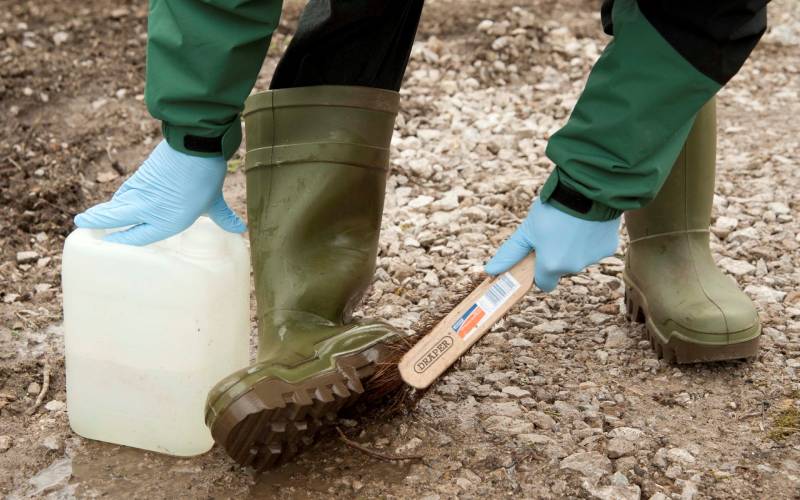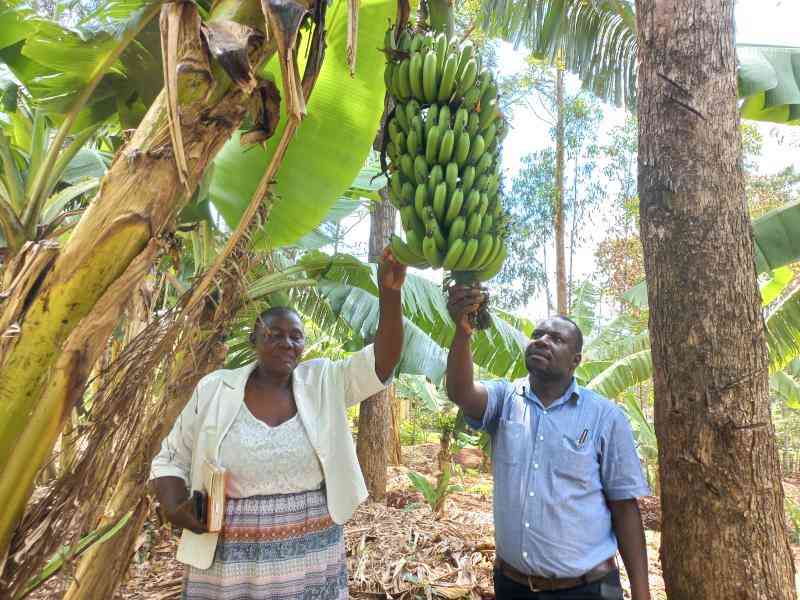
It is the wish of all poultry farmers to rear their birds under good nutritional, management, and healthy conditions purposely to improve bird health, well-being and productivity. Achieving good and profitable flock performance, health and welfare is the dream of all livestock farmers. Here are 10 ways diseases can be introduced into your farm and what you can do to stop it.
1. Infected Chicks
Disease agents can come with chicks, especially if the source parent flocks were infected or fell sick at the time of egg production. Such maternally transmitted diseases include fowl typhoid, mycoplasma and chicken anaemia. Always buy your chicks from a trusted supplier, a good management of healthy parent stock, will provide a healthy foundation for good future chicken performance.
2. Wet litter
There are many litter types. Pine wood shavings, saw dust, rice hulls, coffee hulls, chopped straw and shredded paper. The best beddings are shavings from soft wood as they have good absorbent properties even during dust bathing sessions. Wet litter contributes immensely to condemnation of meat due to breast blisters, skin burns, footpad dermatitis and hock burns. Good quality litter should be dry and friable (easily crumbled).
3. Contaminated Feed
Feed quality plays a big role in the health of the chickens. Quality feed will support early growth and physiological development ensuring target weights, robust health and welfare are achieved. Contaminated feed with pathogens will result into infectious diseases like salmonellosis. For that reason, ensure that you only buy your feed from trusted sources. Store your feeds in dry well aerated rooms away from rodents.
4. Dirty Housing
Units that had previously been occupied with birds can be a source of infection to the incoming young flocks. Pre-spray throughout the inside of the units with detergent solutions, scrub thoroughly and wash using a pressure washer. Rinse with warm water, apply disinfectant and leave to dry.
5. Contaminated visitors
Strictly prevent access to your farm from un-authorised visitors. Visitor coming from an infected flock can directly contaminate your birds. Gumboro disease is widely spread by contaminated staff or visitors. If they must visit your flocks, they must shower and change into protective personal attire.
6. Dirty Hatchery
Hatchery is one of the greatest disease risks in the whole cycle of poultry production. Dirty and contaminated hatcher boxes will directly affect quality of chicks during hatching. Chicks are known to die within the first week in the farm. Choose your supplier carefully.
7. Dirty Water
Birds should have access to clean, fresh, good quality drinking water 24 hours a day. Water can easily be contaminated if the source is doubtful. Always treat water for poultry using chlorine tablets maintaining a level of 2-3ppm (parts per million).
8. Equipment & vehicles
The primary method through which disease-causing microorganisms are spread between poultry flocks is by use of contaminated equipment or exposure to contaminated clothing and footwear of humans and vehicles. Clean and disinfect all equipment getting into your farm. Disease causing microorganisms can be transported from one flock to another by shared equipment, trucks, etc.
9. Rodents
Rats and mice are a menace in a poultry house and are likely to transmit diseases such as typhoid and cholera. There are two types of rats - roof and Norway rat. A female rat can produce up to 12 pups at birth and breed 17 times per year thereby producing about 200 offspring per female. It takes one pup 21 days to mature. Control rat population by baiting or use of traps. The baits should be placed in a baiting station, box or inside a 12-inch-long and 4-inch-wide waste pipe along the perimeter fences, along and on the outside of chicken houses. Baits should not be accessed by wild birds, dogs, cats, monkeys and therefore should be securely and safely positioned.
10. Wild birds
Wild birds are known to harbour disease-causing organisms. They are healthy carriers of infective viruses and bacteria. Keep your flocks in bird proof units or barns using both wire and chicken wire mesh on the open sided parts of the units. Remember to keep all doors closed all the time.
Want to get latest farming tips and videos?
Join Us
 The Standard Group Plc is a multi-media organization
with investments in media platforms spanning newspaper print operations,
television, radio broadcasting, digital and online services. The Standard Group
is recognized as a leading multi-media house in Kenya with a key influence in
matters of national and international interest.
The Standard Group Plc is a multi-media organization
with investments in media platforms spanning newspaper print operations,
television, radio broadcasting, digital and online services. The Standard Group
is recognized as a leading multi-media house in Kenya with a key influence in
matters of national and international interest.
 The Standard Group Plc is a multi-media organization
with investments in media platforms spanning newspaper print operations,
television, radio broadcasting, digital and online services. The Standard Group
is recognized as a leading multi-media house in Kenya with a key influence in
matters of national and international interest.
The Standard Group Plc is a multi-media organization
with investments in media platforms spanning newspaper print operations,
television, radio broadcasting, digital and online services. The Standard Group
is recognized as a leading multi-media house in Kenya with a key influence in
matters of national and international interest.







